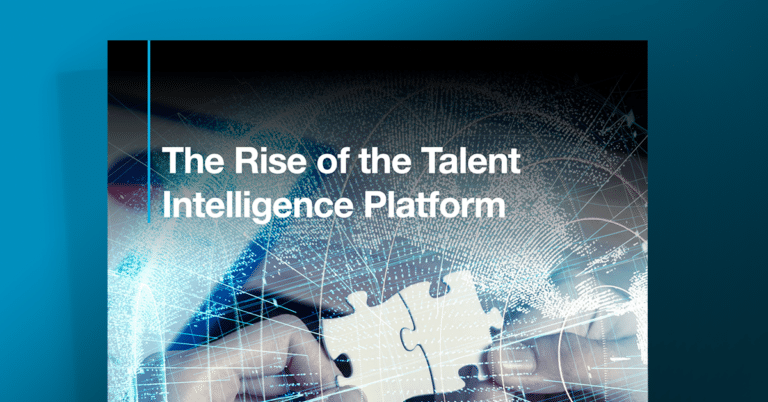In this new category-defining report, Josh Bersin talks about the rise of the Talent Intelligence Platform and what it means for enterprises.
It outlines the challenges that companies face matching people to the right roles and how a Talent Intelligence Platform is the backbone of true integrated talent management.
Read the report now to learn:
- What a Talent Intelligence Platform is and why it matters
- How advanced AI is already matching people to opportunities
- Why companies like Bayer and Micron are using Talent Intelligence Platforms and how to get started
The Talent Intelligence Platform explained
What do we mean by a talent intelligence platform?
A platform refers to substantial piece of software, an operating system, or a database that other companies can access for content distribution purposes or use as a foundation on which to build their own products. Platforms are designed to allow third parties to use the platform infrastructure to deliver value to users via data and process integrations.
The pandemic really brought platforms forward in all areas, including HR and talent, because we learned that things change constantly. People are more overwhelmed than ever and integrating talent processes into natural workflows becomes a necessity. Everybody needs flexibility, and so a flexible platform is needed.
A talent intelligence platform integrates insights about workers – their skills, capabilities, experiences, career aspirations, performance, demographics, learning needs, development opportunities – and uses this information to help people find the right opportunities for them. In essence, talent matching, or matching people to opportunities.
How do we effectively and accurately execute talent matching?
What’s the unit of measure or the currency we should use for talent matching? In theory, competency models are a good idea. But in practice, they have never really worked well, especially now. That’s because most jobs are more complex than a job description can ever capture.
So, companies were looking for something to replace competencies. Many HR tech vendors came up with skills ontology frameworks, which offered a way to capture underlying skills needed to do jobs. Of course, there are also thousands of skills.
We see a new architecture emerging. Rather than simply matching people to jobs (which are often ill-defined with descriptions that quickly become out of date), we can decompose jobs into roles, each of which has clear capability needs. Then the system can look for people with relevant capabilities and experiences and find an even better match for candidates.
Many HCM, learning, and recruiting vendors have developed their own skills taxonomies, proclaiming theirs as the best. But these standalone skills taxonomies can quickly become
islands, useful only for limited use. A true talent intelligence platform would bring all these taxonomies together, enabling the company to source, identify, and intelligently move people with a deep reservoir of knowledge.
What makes Eightfold’s talent intelligence platform unique?
Originally positioned as a recruitment solution, the Eightfold platform was developed to collect, index, and analyze millions and millions of profiles and use advanced AI to match them to jobs, opportunities, and career paths. But the solution doesn’t stop at profiles. Eightfold looks carefully at adjacent skills, people you know, companies you have worked for, the time spent in various jobs, education, and work locations – all of which provides a more comprehensive view of an individual.
Eightfold’s algorithm aims to infer skills not just from jobs — you can train it by using data from successful candidates and then it looks for candidates with similar attributes. It learns quickly, and it learns well.
Because Eightfold’s talent intelligence platform is built as an integrated platform, it ingests data from a wide variety of sources – from employee profiles and HRMS data, jobs, ATS data, learning systems, performance data – to match across different areas and for many different use cases, helping recruiters get better and faster at talent matching.
Eightfold’s talent intelligence platform improves candidate experience, as well, by automatically giving recommendations for jobs for which they could be a match at the time of resume submission — including suggestions for jobs the candidates may not have considered.
How should you get started with a talent intelligence platform?
In order to reap the full benefits of a talent intelligence platform, you need to do the groundwork – because any platform is only as good as the strategy it supports. Consider these three, fundamental steps:
1. Simplify your job architecture.
2. Define what skills you need.
3. Start small, establish AI matching, and expand.











